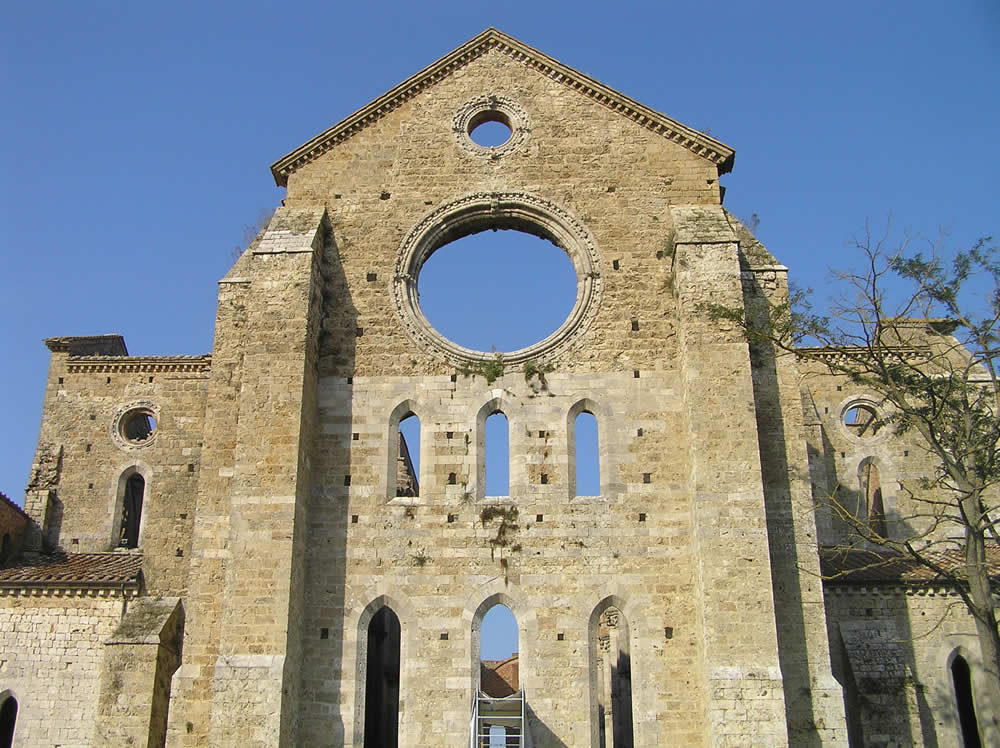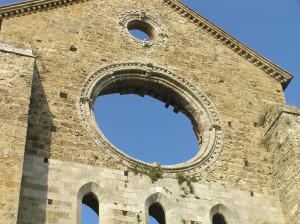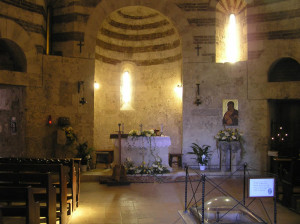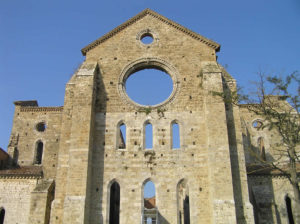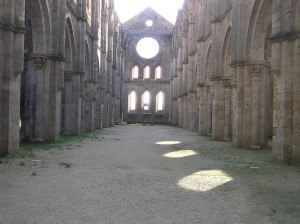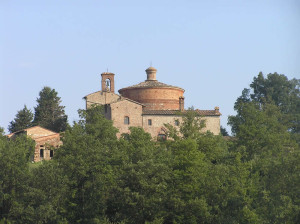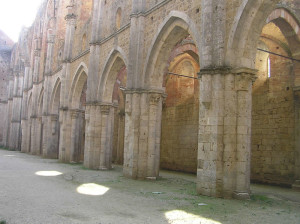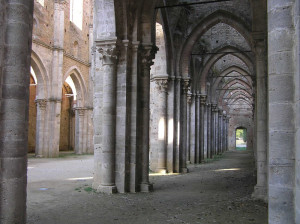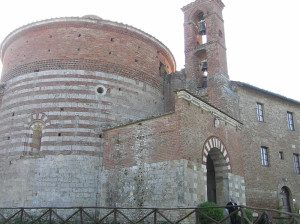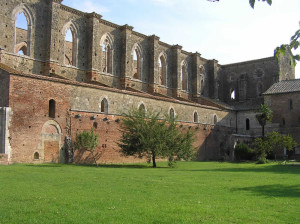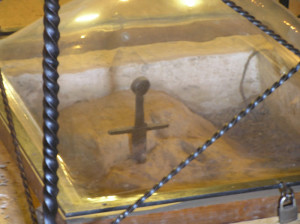Questo articolo è disponibile anche in:
![]() Français
Français ![]() Deutsch
Deutsch ![]() Español
Español ![]() Italiano
Italiano
The Abbey of San Galgano is easily to reach from Siena taking the state road n.73 in direction of Rosia and Frosini. Four kilometers before arriving to Monticiano turn to right on road n.441 for Massa Marittima and after 2 kilometers turn on the left for the road that leads to the Abbey.
The remains of this abbey, with Latin cross plan, covered in travertine and bricks, and with the sky as roof are evocative and fascinating.
HISTORY
The construction of the complex happened for the work of Cistercians between 1224 and 1288, the building inspires to the Cistercians churches built in the same period in France, and is the more important example gothic-Cistercian style present in Tuscany.
The abbey originated from a chapel built in 1180 from Galgano Guidotti (San Galgano), nobleman knight native of Chiusdino, that here passed in hermitage the last years of his life.
After the dead of the saint the Cistercians built in his honor a monastery, in the 13th century the monastery of San Galgano became the more important and powerful of the zone, possessing an immense territory around the abbey.
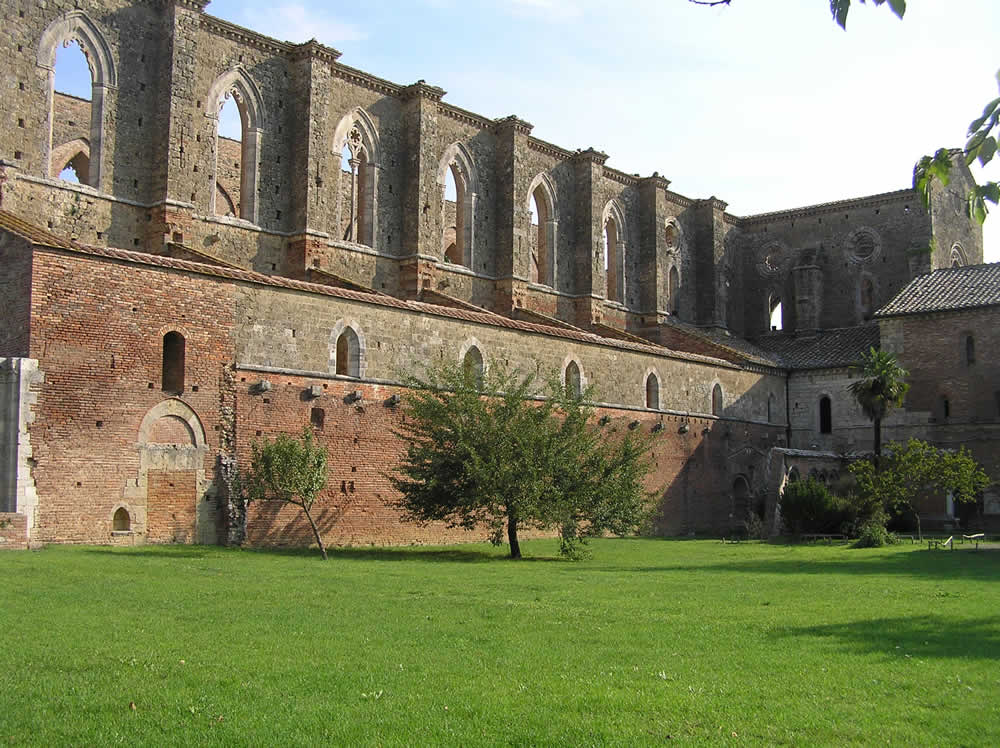
The Abbey decline began in the 14th century, when it was plundered for two times from the mercenary Giovanni Acuto (John Hawkwood, English soldier, to which Florence, as reward for his services, granted to him, as residence, the Castle of Montecchio Vesponi) and this decline was accentuated in the 15th and 16th century.
In 1577 a restoration of the structure was attempted, but the degradation was not stopped, in 1786 the bell tower collapsed (it was high 36 meters) and then collapsed also the vaulted roof.
SUGGESTIVE REMAINS
The unfinished facade has 4 columns, over the columns are visible the projections that had to support the porch, that never was built. The structure externally measure 72 meters of length and 21 meters of width. While the portal of access is decorated with an architrave with a decoration of acanthus leaves.
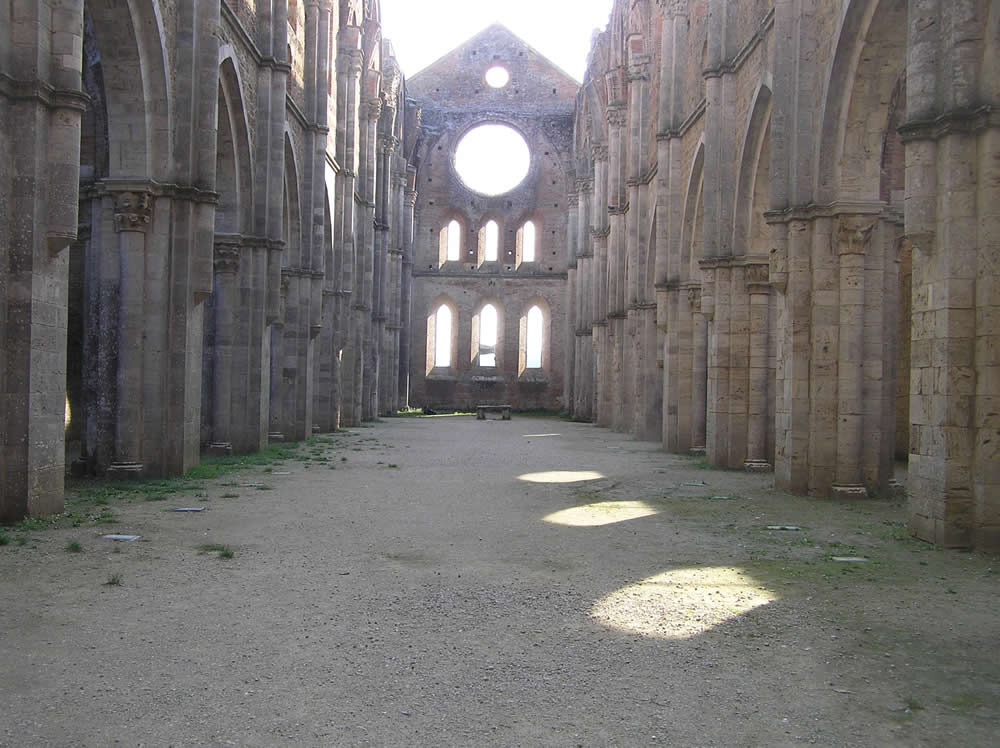
The interior of the church, majestic and immense, has a Latin cross plan, with three aisles, and 16 columns with beautiful capitals. The arches are ogival with double archivolt, the transept has to three aisles. While the apse has six ogival monophores and two rose-windows that confer to all the architectonic structure an extraordinary sense of lightness and elegance. A large rose-windows, with rests of the decoration, is present in the right transept head. The flanks of the church have walls with monophore and double lancet windows.
The Abbey of San Galgano, is one of the beautiful examples of the gothic Cistercians style in Italy, it conserve still today, although the damages of the time and perhaps just thanks to its evocative aspect of ruins, a solemn magnificence that leaves to realize the ancient beauty.
A few hundred metres from the ruins of the abbey, on a hill, stands a small chapel filled with frescoes and inside the famous Sword in the Stone of San Galgano.
BIBLIOGRAPHY
- AA. VV. “Toscana” Guide Rosse Touring Club Italiano, 2007
- Scali Luciano, Anselmi Barbara, Zangrandi Camillo, cur. Ass. culturale di Murlo “Val di Merse. Casole d’Elsa, Chiusdino, Monticiano, Murio, Radicondoli, Sovicille” 2005, Aska Edizioni
- cur. Benvenuti A. “La spada nella roccia. San Galgano e l’epopea eremitica di Montesiepi” 2004, Mandragora
- Marini Massimo “Chiusdino. Il suo territorio e l’Abbazia di San Galgano” 1995, NIE
- Cardini Franco “San Galgano e la spada nella roccia” 2000, Cantagalli
- Conti Andrea “San Galgano: il santo, l’eremo, l’abbazia. Storia e storie intorno alla spada nella roccia” 2011, Aska Edizioni
Questo articolo è disponibile anche in:
![]() Français
Français ![]() Deutsch
Deutsch ![]() Español
Español ![]() Italiano
Italiano

